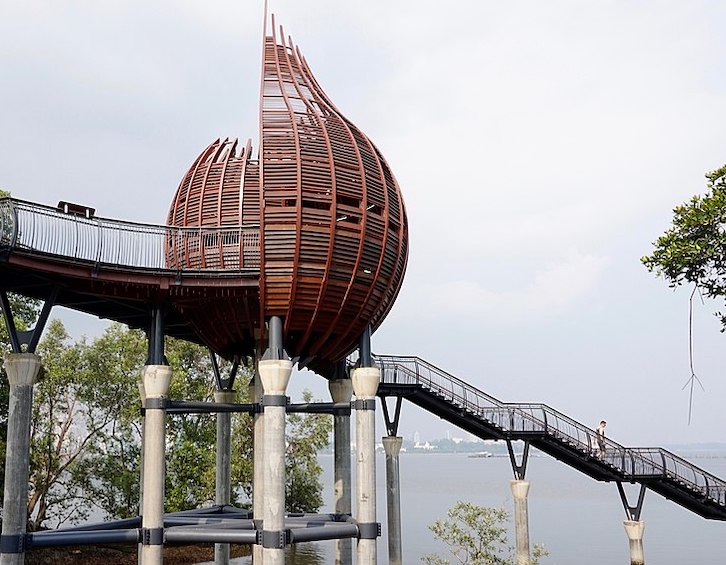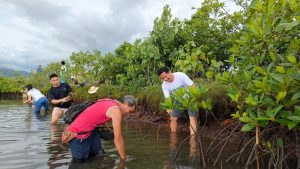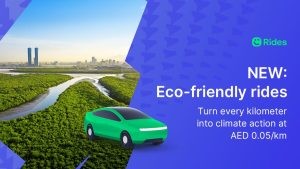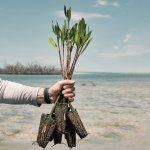Discover Sungei Buloh Wetland Reserve: Exciting Wildlife Experiences for Families
Explore Sungei Buloh Wetland Reserve with the Kids
Looking for an exciting yet leisurely activity to try with the kids? Sungei Buloh Wetland Reserve is one of those places we love to visit multiple times because there’s no way of getting bored! It’s a spot that I also frequently recommend to friends and family who pass through town, as it is a jewel of an ecosystem. In the 19th century, mangroves were found all along the coastline of Singapore, but were cleared for industry and housing. Today, forests of mangroves can only be found on offshore islands and nature reserves such as Sungei Buloh Wetland Reserve.
Sungei Buloh Wetland Reserve is incredibly kid-friendly and an easy day trip that can be completed in as little as an hour or stretched out to a few hours if you choose to walk the longer trails. Keep reading to find out all about this beautiful slice of wildlife in Singapore!
How to get to Sungei Buloh Wetland Reserve
By car: Sungei Buloh is easily accessible by car, with free parking at car parks off Kranji Way located near the Visitor Centre and another car park off Neo Tiew Crescent near the Wetland Centre.
Public transport: The bus stop located outside the entrance on Kranji Way is served by Bus 925 (Monday – Saturday) or 925M (Sunday, Public Holiday), which you can take from Kranji MRT station.
Nature & Animals at Sungei Buloh Wetland Reserve
Of the 70 species of mangrove found in the world, 31 can be found in Singapore, and 27 in Sungei Buloh Wetland Reserve alone. These diverse species are home to a plethora of animals, including insects, amphibians, fishes, birds, and mammals.
On our most recent visit to Sungei Buloh, we saw mudskippers, bizarre fish whose eyes protrude from the water and “skip” along the mudflats, and even managed to follow, from afar, an estuarine crocodile from sea to inland. In all our visits, we have yet to catch sight of a Malayan water monitor lizard, which can grow up to 6 feet long, or a smooth-coated otter, which is widespread along the Johor Straits. Soon, we hope!
While it’s fascinating to catch sight of animals at Sungei Buloh Wetland Reserve, it’s important to remember that these are wild animals capable of attacking. To ensure safety, avoid approaching, provoking or feeding them. Always stay on the designated trails, keep an eye out for wildlife, and if you encounter any, remain calm and maintain a safe distance.

Sungei Buloh Wetland Reserve: Perfect for Family Adventures
Sungei Buloh has several walking trails, including the Coastal Trail, Forest Trail and Mid-Canopy Walk. Most of these trails are stroller-friendly, and are perfect even for toddlers! The 500-meter-long Mangrove Boardwalk, which winds its way through the mangrove trees, is just perfect for my daughter, who can hike a little over a mile comfortably before asking to be carried. The Boardwalk is also stroller- and wheelchair-friendly. One of the iconic features of Sungei Buloh Wetland Reserve would have to be the kingfisher pods, which provide stunning panoramic views of the Johor Strait. There are five of these pods around the reserve, and they’re best accessed via the Coastal Trail (which is also super stroller-friendly!)
Top News

The Importance of Wetlands and Mangroves in Environmental Conservation
PENRO Negros Occidental celebrated World Wetlands Day early by hanging tarpaulins, planting 500 mangrove propagules, and collecting 18 sacks of garbage, mostly single-use plastics. They promote clean wetlands and emphasize the importance of environmental conservation. Collaboration is key in resolving environmental disputes. Let’s love and care for our environment.

Careem partners with CarbonSifr, climate-tech company.
Careem has launched an Eco-friendly ride-hailing service in Dubai, in partnership with CarbonSifr, a climate-solution company. This new option allows Careem customers to support carbon removal projects in the UAE and the wider region. By choosing the Eco-friendly ride, customers contributions will g

LuLu and Unilever Partner for Sustainable Consumer Initiative
Lulu Group and Unilever have announced a collaboration at COP28, the 28th United Nations Climate Change Conference, to reward consumers for making sustainable choices. The initiative aims to educate consumers about the importance of driving sustainable behavior change and the role of mangroves in mi

